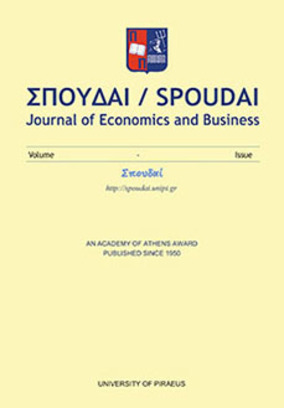Particularly sea-sensitive areas and marine protection zones : a controversial issue that needs interpretation
Part of : Σπουδαί : journal of economics and business ; Vol.63, No.3-4, 2013, pages 51-59
Issue:
Pages:
51-59
Author:
Abstract:
It has been accepted that when an area or zone has been approved as being particularly sensitive, some specific measures against maritime activities and environmental issues can be adopted for monitoring and control. Marine zones have been used around the world as an important resource management tool. They can help protect sensitive natural resources from overuse, separate conflicting visitor uses and preserve the variety of marine life, or biodiversity, of an area. A Particularly Sensitive Sea Area (PSSA) is an area that needs special protection through action by IMO because of its significance for recognized ecological or socio-economic or scientific reasons and which may be vulnerable to damage by international maritime activities. However, the criteria for the identification of particularly sensitive sea areas and those for the designation of special areas are not mutually exclusive. The relevant conventions both at the international and regional level (UNCLOS, MARPOL, Barcelona) have detailed provisions dealing with such zones or areas. Even the Exclusive Economic Zone has been used as a semi-ecological zone by some states when shipping activities are involved. This paper will investigate the current situation in the Mediterranean Sea, specifically what kind of protection zones and other marine protection areas are established but create problems in terms of multiple uses and different users, and then discuss and propose a basis-network of zoning that is consistent with international law, to be functioning in the Eastern Mediterranean, particularly in Greek waters.
Subject (LC):
Keywords:
sensitive areas, ecological zones, shipping, pollution, Greek seas
Notes:
Περιέχει εικόνες και βιβλιογραφία, Special Issue: Management of maritime safety, security and environmental protection
References (1):
- Alexopoulos, A.B., 2013. Problems encountered when Tankers lie at Ports. The Case of Pylos andthe Establishment of Marine Protection Zones, Honorary volume for Prof. Lekkas, Universityof the Aegean, in press.Blanco-Bazan, A., 2000. IMO interface with the Law of the Sea Convention, paper presented atthe Seminar on current maritime issues and the work of the IMO, 23rd Annual Seminar of theCenter for Ocean Law and Policy, University of Virginia School of Law.Jensen, O., 2006. Coastal State Jurisdiction and Vessel Source Pollution, FNI Report 3/2006, pp.1-53.IMO, 2008. Implications of the United Nations Convention on the Law of the Sea InternationalMaritime Organization, Study by the Secretariat of IMO, I:\LEG\MISC\6.doc, pp. 1-110.Notarbartolo di Sciara, G., 2010. Methods for the Identification of EBSAs in the Adriatic Sea, 3rdInt’al Workshop on Biodiversity in the Adriatic, Piran, pp. 1-16.Scovazzi, T., 2004. Marine Protected Areas on the High Seas: Some Legal and Policy Considerations,Int’al Journal of Marine and Coastal Law, Vol. 19, No 1, pp. 1-17.Suarez de Vivero, J.L., 2010. Jurisdictional Waters in the Mediterranean and Black Seas, Study forthe Directorate-General for Internal Policies, European Parliament.Vidas, D., 2008. The UN Convention on the Law of the Sea, the European Union and the Rule ofLaw. What is going on in the Adriatic Sea? Fridtjof Nansens Institutt, Report 12, pp. 1-66.




